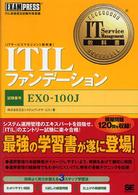- ホーム
- > 洋書
- > 英文書
- > Gardening & Plants
Full Description
There are twenty million acres of lawns in North America. In their current form, these unproductive expanses of grass represent a significant financial and environmental cost. However, viewed through a different lens, they can also be seen as a tremendous source of opportunity. Access to land is a major barrier for many people who want to enter the agricultural sector, and urban and suburban yards have huge potential for would-be farmers wanting to become part of this growing movement. The Urban Farmer is a comprehensive, hands-on, practical manual to help you learn the techniques and business strategies you need to make a good living growing high-yield, high-value crops right in your own backyard (or someone else's). Major benefits include: Low capital investment and overhead costs Reduced need for expensive infrastructure Easy access to markets Growing food in the city means that fresh crops may travel only a few blocks from field to table, making this innovative approach the next logical step in the local food movement.
Based on a scalable, easily reproduced business model, The Urban Farmer is your complete guide to minimizing risk and maximizing profit by using intensive production in small leased or borrowed spaces. Curtis Stone is the owner/operator of Green City Acres, a commercial urban farm growing vegetables for farmers markets, restaurants, and retail outlets. During his slower months, Curtis works as a public speaker, teacher, and consultant, sharing his story to inspire a new generation of farmers.
Contents
Foreword, by Diego Footer
Preface
1: A Farm in the City
Why Urban Farming?
Connecting the Dots: An Urban Farmer's Place in the Community
Quick Breakdown of Economics
2: A Viable Farming Business On ½ Acre Or Less
The Zones of Your Farm and Your Life
Crops Better Suited for the City
Introdution to Urban Infrastructure
Start-Up Farm Models
3: The Business of Urban Farming
Starting Small
Market Streams
Working with Chefs
Labor
Software and Organization
Self-Promotion
Finance Options
4: Finding the Right Site
Scouting for Land
Urban, Suburban and Peri-Urban Land
Multiple or Single-Plot Farming
Urban Soil
Land Agreements and Leases
Urban Pests
5: Building Your Farm, One Site at a Time
Turning a Lawn Into a Farm Plot
Choosing A Site
Garden Layout
The Perimeter
Irrigation
6: Infrastructure and Equipment
Base of Operations
Tools
Special Growing Areas
Inexpensive Season Extension
Transportation
7: Operations
Work Smarter not Harder
Harvesting
Post-Harvest Processing
Portioning and Packing
8: Production Systems
Beds for Production
Planting
Microgreens
Extending the Season
9: Basic Crop Planning
Determine Your Outcome
The Base Plan
10: Crops for the Urban Farmer
Parting Words
Acknowledgments
Glossary
Endnotes
Index
About the Author







